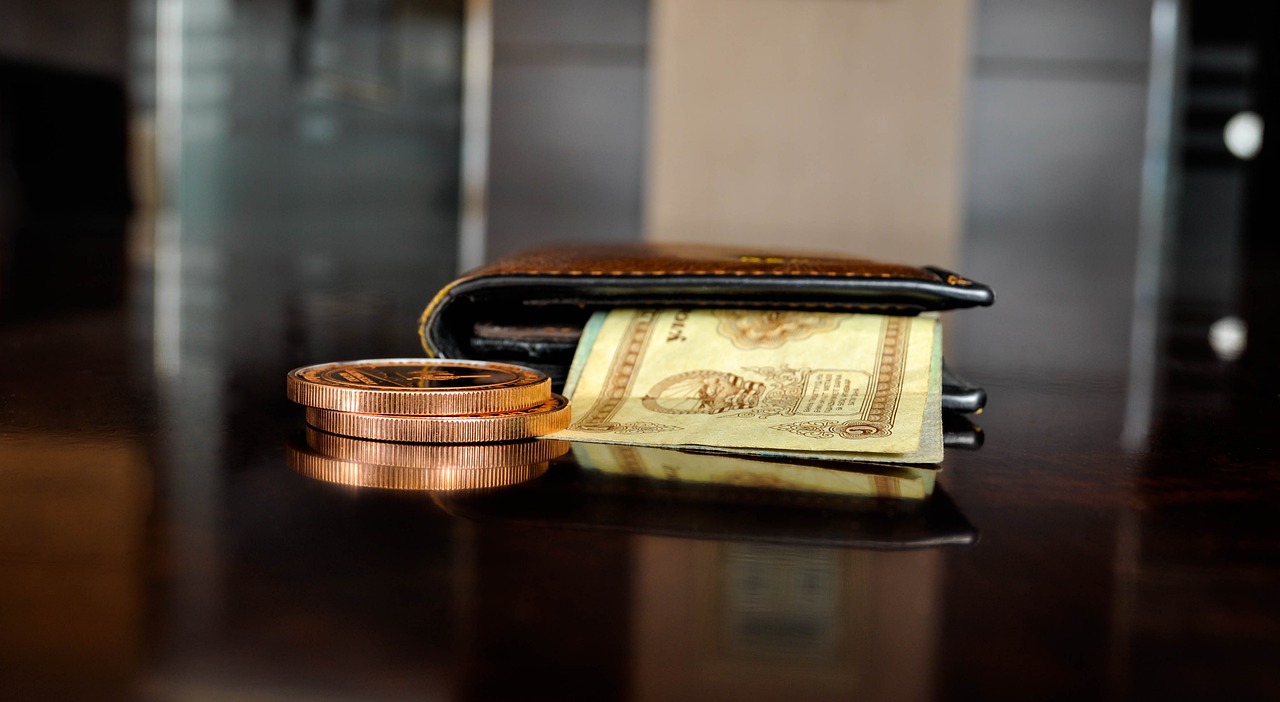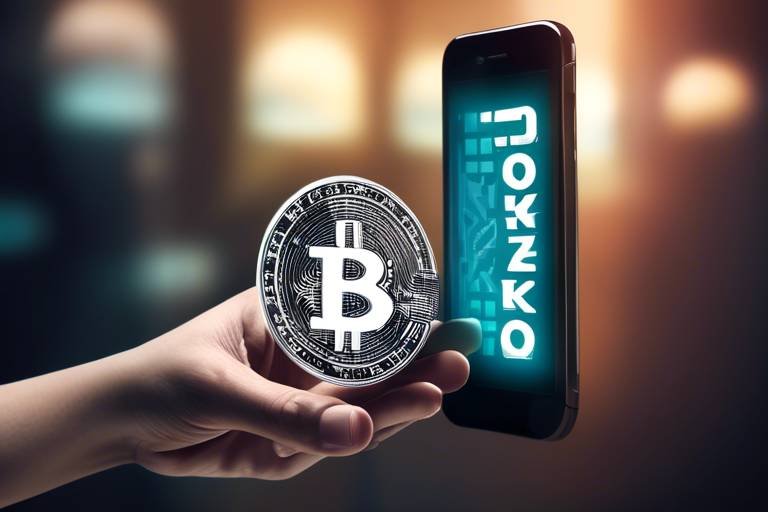The Rise of Tokenization - What You Need to Know
In recent years, the concept of tokenization has emerged as a buzzword that is reshaping the landscape of various industries. But what exactly is tokenization? Imagine a world where assets, whether they are physical or digital, can be represented as tokens on a blockchain. This innovative approach not only simplifies ownership but also enhances accessibility and liquidity. As we dive deeper into the realm of tokenization, we will explore its implications, benefits, and the transformative potential it holds for digital assets and financial systems.
Tokenization is the process of converting rights to an asset into a digital token that can be easily managed and transferred. Think of it as turning a physical object, like a piece of real estate or a work of art, into a digital representation that can be bought, sold, or traded on a blockchain. This digital token acts as a certificate of ownership, making it easier to prove and transfer ownership rights. The significance of tokenization lies in its ability to democratize access to assets that were once considered exclusive or illiquid. By breaking down these barriers, tokenization facilitates asset management and ownership in a way that is both efficient and secure.
The benefits of tokenization are numerous and can revolutionize traditional asset management and investment strategies. Here are some key advantages:
- Enhanced Liquidity: Tokenization allows assets to be easily traded on secondary markets, increasing their liquidity. This means that investors can buy and sell assets more quickly and efficiently.
- Fractional Ownership: Tokenization enables fractional ownership, allowing multiple investors to own a portion of an asset. This opens up investment opportunities for individuals who may not have the capital to purchase an entire asset.
- Improved Security: With blockchain technology backing tokenization, transactions are recorded securely and transparently. This reduces the risk of fraud and enhances trust among investors.
The real estate sector is one of the most promising areas for tokenization. By adopting this innovative approach, real estate transactions can be streamlined, and investment opportunities can be broadened. For instance, a luxury apartment complex can be tokenized, allowing multiple investors to purchase tokens representing their share of the property. This not only democratizes access to real estate investments but also increases liquidity in a traditionally illiquid market. Case studies have shown that tokenized real estate projects have successfully attracted a diverse pool of investors, leading to faster transactions and increased market participation.
Financial markets are experiencing a significant shift due to tokenization, which allows for innovative trading models. Tokenized assets, such as stocks or bonds, can be traded 24/7 on various platforms, providing investors with unprecedented flexibility. This shift is reshaping investment approaches and market dynamics, as traditional barriers to entry are lowered. Investors can now engage in micro-investing, where they can purchase fractions of high-value assets, thus diversifying their portfolios without the need for substantial capital.
As tokenization gains traction, it raises important legal and regulatory questions. The lack of a standardized framework can create challenges for businesses and investors alike. It is crucial to establish regulations that ensure compliance and protect investors in a tokenized environment. Governments and regulatory bodies are beginning to recognize the need for clear guidelines to navigate this evolving landscape, which will ultimately foster trust and security in tokenized transactions.
Despite its many benefits, tokenization faces several challenges that could hinder widespread adoption. Technological hurdles, such as scalability and interoperability between different blockchain platforms, need to be addressed. Additionally, market acceptance is essential; many traditional investors may be hesitant to embrace this new model. Overcoming these obstacles will be key to unlocking the full potential of tokenization in various sectors.
As tokenization continues to evolve, several trends are emerging. We can expect to see increased integration with Decentralized Finance (DeFi), where tokenized assets can interact seamlessly with financial services. Furthermore, advancements in Artificial Intelligence (AI) may lead to more sophisticated valuation models for tokenized assets. These developments will have significant implications for various sectors and the global economy, pushing the boundaries of what is possible in asset management and investment.
At the heart of many tokenization efforts lies blockchain technology, which ensures transparency and security in transactions. Blockchain acts as a decentralized ledger that records every transaction, making it nearly impossible to alter or manipulate data. This level of security is crucial for building trust in digital transactions, especially in an era where fraud and cyber threats are rampant. By leveraging blockchain, tokenization can create a more reliable and efficient system for managing and trading assets.
For businesses and individuals interested in tokenization, understanding the initial steps is crucial. Here’s a practical guide to help you get started:
- Research the different types of assets that can be tokenized.
- Explore blockchain platforms that support tokenization.
- Consult with legal experts to understand regulatory requirements.
- Develop a clear strategy for how you plan to implement tokenization.
What is tokenization?
Tokenization is the process of converting rights to an asset into a digital token that can be easily managed and transferred on a blockchain.
What are the benefits of tokenization?
Tokenization offers enhanced liquidity, fractional ownership, and improved security, among other advantages.
How is tokenization used in real estate?
Tokenization allows for the fractional ownership of real estate properties, making it easier for investors to participate in the market.
What challenges does tokenization face?
Key challenges include technological hurdles, regulatory compliance, and market acceptance.

Understanding Tokenization
Tokenization is a revolutionary concept that has gained traction in recent years, particularly with the rise of digital assets. At its core, tokenization refers to the process of converting rights to an asset into a digital token that can be easily traded, transferred, or owned. Imagine you have a beautiful painting hanging in your living room. Traditionally, owning that painting means you have the physical piece in your possession. However, with tokenization, you can create a digital representation of that painting, allowing others to own a fraction of it without ever needing to hang it on their wall. This transformation opens up a world of possibilities for asset management and ownership.
The significance of tokenization lies in its ability to democratize access to various assets. In the past, investing in high-value items like real estate or fine art was often limited to wealthy individuals or institutional investors. Tokenization breaks down these barriers by allowing multiple investors to own fractions of these assets, thereby distributing the risk and making investments more accessible. This is akin to sharing a pizza; instead of one person eating the whole pie, everyone gets a slice, making it more enjoyable and affordable for all.
Furthermore, tokenization enhances the liquidity of assets. Liquidity refers to how easily an asset can be converted into cash without significantly affecting its price. Traditional assets like real estate can take months or even years to sell, but tokenized assets can be traded on digital platforms almost instantly. This shift not only speeds up transactions but also opens up new avenues for investment strategies. For example, an investor can quickly sell their tokenized share of a property if they need cash, rather than waiting for a buyer to come along.
In addition, the process of tokenization is often built on blockchain technology, which ensures that each transaction is secure, transparent, and immutable. This means that once a token is created and transactions are recorded, they cannot be altered or deleted. The trust that blockchain provides is essential in a world where digital fraud is a growing concern. As a result, tokenization not only simplifies asset management but also enhances security, making it a game-changer for industries looking to modernize their operations.
Overall, understanding tokenization is crucial for anyone interested in the future of finance and asset management. As we continue to navigate this digital age, tokenization stands out as a powerful tool that can reshape how we think about ownership and investment.
- What types of assets can be tokenized? Almost any asset can be tokenized, including real estate, art, stocks, and even intellectual property.
- How does tokenization improve liquidity? Tokenized assets can be traded on various platforms, allowing for quicker transactions compared to traditional asset sales.
- Is tokenization safe? Yes, when built on blockchain technology, tokenization offers a high level of security and transparency.
- Who can invest in tokenized assets? Tokenization democratizes investment opportunities, allowing both individual and institutional investors to participate.

Benefits of Tokenization
Tokenization is not just a buzzword; it's a transformative force in the world of finance and beyond. Imagine being able to own a fraction of a high-value asset, like a luxury apartment or a piece of fine art, without needing a fortune. That's one of the most exciting benefits of tokenization. By converting physical assets into digital tokens, it opens up a world of possibilities for investors and asset owners alike.
One of the standout advantages of tokenization is enhanced liquidity. Traditional assets often come with a hefty price tag and can take a long time to sell. With tokenization, assets can be divided into smaller, more affordable pieces, making it easier for investors to buy and sell. This increased liquidity means that you can quickly convert assets to cash, which is a game-changer in times of financial need. Think of it like turning a large, cumbersome piece of furniture into a collection of smaller, easily sellable items.
Another significant benefit is fractional ownership. This concept allows multiple investors to own a share of an asset, which not only democratizes investment opportunities but also reduces risk. Instead of putting all your eggs in one basket, you can spread your investments across various tokenized assets. This is particularly appealing in sectors like real estate, where a single property might be out of reach for many. By tokenizing, you can own a slice of that property and enjoy the benefits of appreciation and rental income.
Moreover, tokenization enhances security. Traditional asset transactions often involve a lot of paperwork and intermediaries, which can increase the risk of fraud and errors. Tokenization leverages blockchain technology, which provides a secure, transparent, and immutable record of ownership. This means that once a token is created, it cannot be altered or tampered with, ensuring that the ownership records are accurate and trustworthy. Imagine how much easier it would be to prove ownership of an asset when all the details are recorded on a secure digital ledger!
In addition to these benefits, tokenization can lead to lower transaction costs. The traditional process of buying and selling assets often involves multiple parties, such as brokers and legal advisors, each taking a cut of the profits. By streamlining the process through tokenization, these costs can be significantly reduced, allowing more of the value to go to the investors. This efficiency is akin to cutting out the middleman in a transaction, which can lead to more favorable outcomes for everyone involved.
As we delve deeper into the world of tokenization, it becomes clear that its benefits extend beyond mere convenience. It is reshaping the investment landscape, making it more accessible, secure, and efficient. Whether you're a seasoned investor or a newcomer looking to dip your toes into the market, understanding these advantages can empower you to make informed decisions and seize the opportunities that tokenization presents.
- What is tokenization? Tokenization is the process of converting rights to an asset into a digital token that can be easily traded.
- How does tokenization enhance liquidity? By allowing assets to be divided into smaller tokens, investors can buy and sell portions of assets more easily.
- Can I invest in tokenized assets? Yes, tokenization opens up investment opportunities for individuals who may not have the capital to invest in whole assets.
- Is tokenization secure? Yes, tokenization utilizes blockchain technology, which provides a secure and transparent record of ownership.

Tokenization in Real Estate
Tokenization is making waves in the real estate sector, and for good reason! Imagine being able to invest in a fraction of a high-end property without needing millions of dollars. That's the beauty of tokenization! By converting real estate assets into digital tokens, it allows for fractional ownership, enabling more people to participate in the property market. This democratization of real estate investing is not only exciting but also opens up a world of opportunities for both seasoned investors and newcomers.
Traditionally, investing in real estate has been a cumbersome process, often requiring extensive capital, legal complexities, and a lengthy transaction period. Tokenization simplifies this by using blockchain technology to create a digital representation of the asset. This digital token can be easily traded on various platforms, providing enhanced liquidity that was previously unavailable in the real estate market. With tokenized assets, sellers can quickly find buyers, and investors can liquidate their holdings with just a few clicks.
Let's take a look at some real-world examples of how tokenization is transforming the real estate landscape:
- Property Sharing Platforms: Companies like Real Estate Investment Trusts (REITs) are now using tokenization to allow investors to buy shares in specific properties, making it easier for individuals to diversify their portfolios.
- Global Investment Opportunities: Tokenization enables investors from around the world to invest in properties located in different countries, breaking down geographical barriers that once limited access.
- Streamlined Transactions: The use of smart contracts on the blockchain automates many aspects of property transactions, reducing the need for intermediaries and speeding up the buying process.
However, it’s not just about making investments easier; tokenization also enhances transparency. Every transaction is recorded on the blockchain, which means that ownership records are immutable and easily accessible. This level of transparency helps to build trust among investors, as they can verify the legitimacy of their investments with confidence.
Despite the immense potential, the tokenization of real estate is still in its infancy. Many investors are still learning about the concept and its implications. As awareness grows, we can expect to see more innovative platforms emerge, providing even greater access to real estate investments. Furthermore, regulatory frameworks are beginning to adapt, which will further legitimize and streamline the process.
In summary, tokenization in real estate is not just a trend; it’s a revolutionary shift that is reshaping how we think about property ownership and investment. As technology continues to evolve, we can anticipate a future where real estate is more accessible, transparent, and efficient than ever before.

Tokenization in Financial Markets
Tokenization is not just a buzzword; it’s a game changer in the world of financial markets. Imagine being able to trade assets like stocks, bonds, and even real estate in a digital format that’s secure, transparent, and easily accessible. This is the promise that tokenization brings to the table. By converting tangible assets into digital tokens, we can create a new paradigm of trading that breaks down traditional barriers and opens up a world of opportunities for investors.
One of the most exciting aspects of tokenization in financial markets is its ability to enhance liquidity. Traditionally, certain assets, such as real estate or fine art, have been illiquid, meaning they couldn’t be easily bought or sold without significant time and effort. Tokenization allows these assets to be divided into smaller, tradable units, enabling more investors to participate in the market. Think of it like slicing a large cake into smaller pieces; suddenly, more people can enjoy a slice without needing to buy the whole cake.
Moreover, tokenized assets can be traded 24/7 on various platforms, eliminating the constraints of traditional market hours. This round-the-clock trading aligns with the global nature of today’s economy, allowing investors from different time zones to engage in the market whenever they wish. It’s like having a store that never closes—always open for business, making it easier for everyone to jump in and out of trades.
However, the transformation doesn’t stop at liquidity and accessibility. Tokenization also introduces innovative trading models that can reshape how we think about investments. For example, smart contracts—self-executing contracts with the terms of the agreement directly written into code—can automate transactions and reduce the need for intermediaries. This not only speeds up the process but also cuts down costs significantly. Imagine being able to buy a fraction of a high-value asset, like a vintage car or a piece of art, without having to deal with the complexities of traditional ownership. With tokenization, this is becoming a reality.
To illustrate the impact of tokenization in financial markets, let's take a look at a few key statistics:
| Aspect | Before Tokenization | After Tokenization |
|---|---|---|
| Liquidity | Low | High |
| Trading Hours | Limited | 24/7 |
| Transaction Cost | High | Low |
| Access to Assets | Restricted | Widespread |
Despite these advantages, it’s essential to recognize that the tokenization of financial markets is still in its infancy. There are challenges to overcome, such as regulatory hurdles and the need for widespread acceptance among traditional financial institutions. However, the momentum is building, and as more players enter the space, the landscape is bound to evolve rapidly.
In conclusion, tokenization in financial markets is not merely a trend; it’s a revolution that promises to democratize access to investments, enhance liquidity, and streamline transactions. As we move forward, it’s crucial for investors, businesses, and regulators to understand and adapt to this new reality. The future of finance is here, and it’s digital, decentralized, and tokenized.
- What is tokenization? Tokenization is the process of converting rights to an asset into a digital token that can be traded on a blockchain.
- How does tokenization enhance liquidity? By dividing assets into smaller, tradable units, tokenization allows for easier buying and selling, increasing the overall liquidity of the market.
- What are smart contracts? Smart contracts are self-executing contracts with the terms of the agreement directly written into code, allowing for automated and secure transactions.
- What are the challenges of tokenization? Some challenges include regulatory compliance, market acceptance, and technological hurdles that need to be addressed for widespread adoption.

Legal and Regulatory Considerations
As the world of finance and digital assets evolves, surrounding tokenization are becoming increasingly important. Tokenization, while offering numerous benefits, also introduces a myriad of challenges that must be navigated to ensure compliance and protect investors. The legal landscape is still developing, and businesses venturing into tokenization must stay informed about the regulations that govern their operations.
One of the primary concerns is the classification of tokens. Are they securities, utility tokens, or something else entirely? The distinction is crucial because it determines the regulatory framework that applies to them. For instance, if a token is classified as a security, it must comply with the Securities Exchange Act, which includes registration requirements and obligations for disclosure. This complexity can be daunting for new entrants in the market.
Furthermore, different jurisdictions have varying approaches to tokenization. In some countries, regulations are well-defined, while in others, they are still in their infancy. This inconsistency can create a compliance nightmare for businesses operating internationally. Companies must conduct thorough research to understand the regulatory environment in each jurisdiction where they plan to operate. This often involves consulting with legal experts who specialize in cryptocurrency and blockchain regulations.
Another significant aspect is the need for anti-money laundering (AML) and know your customer (KYC) regulations. These regulations are designed to prevent illicit activities and ensure that businesses know who their customers are. Implementing robust KYC and AML procedures is essential for maintaining trust and integrity in the tokenized ecosystem. Failure to comply with these regulations can result in severe penalties, including fines and legal action.
In addition to these challenges, there is a growing demand for regulatory clarity. As more companies explore tokenization, industry stakeholders are advocating for clearer guidelines that can help facilitate innovation while ensuring investor protection. This has led to discussions among regulators, industry participants, and legal experts about how to create a balanced regulatory framework that encourages growth without compromising security.
To summarize, navigating the legal and regulatory landscape of tokenization requires diligence and foresight. Companies must be proactive in understanding the laws that apply to their operations, implement necessary compliance measures, and stay informed about ongoing regulatory developments. By doing so, they can mitigate risks and position themselves for success in this rapidly evolving space.
- What are the main legal challenges associated with tokenization? The main challenges include token classification, compliance with securities regulations, and adherence to AML and KYC requirements.
- How do regulations differ across countries? Regulations can vary significantly, with some countries having well-defined laws while others are still developing their frameworks.
- What is the importance of KYC and AML in tokenization? KYC and AML protocols are essential for preventing fraud and money laundering, ensuring a trustworthy environment for investors.
- How can businesses stay compliant with changing regulations? Businesses should regularly consult with legal experts, keep abreast of regulatory changes, and adapt their practices accordingly.

Challenges of Tokenization
Despite the many benefits that tokenization brings to the table, it's not all sunshine and rainbows. In fact, there are several significant challenges that could potentially slow down or even derail the widespread adoption of this innovative technology. One of the biggest hurdles is the technological infrastructure required to support tokenization. Many businesses, especially smaller ones, may lack the necessary systems to implement tokenization effectively. This could lead to inefficiencies and increased costs, which are not ideal for any organization.
Another challenge is the market acceptance of tokenized assets. While the concept is gaining traction, there remains a general skepticism among traditional investors and institutions. Many people are still trying to wrap their heads around what tokenization means and how it impacts their investment strategies. It's like trying to explain the internet to someone who still uses a rotary phone; the leap can be daunting.
Additionally, there are legal and regulatory hurdles that cannot be overlooked. The landscape for tokenized assets is still evolving, and many jurisdictions have yet to establish clear guidelines on how these assets should be treated. This uncertainty can create a chilling effect, causing potential investors to hesitate. Without a solid regulatory framework, the risk of fraud and mismanagement increases, which can further deter participation in tokenized markets.
Moreover, the education gap among potential users is another significant barrier. Many individuals and businesses are simply unaware of what tokenization is and how it can benefit them. This lack of understanding can lead to missed opportunities and a slower adoption rate. To overcome this challenge, a concerted effort must be made to educate the market on the advantages and workings of tokenization.
Lastly, we cannot ignore the security concerns that come with digital assets. While blockchain technology offers enhanced security features, the risk of hacking and cyber threats still looms large. Investors need to be assured that their assets are safe and that the platforms they use are secure. Addressing these concerns is crucial for building trust in tokenization as a viable investment strategy.
In summary, while tokenization holds immense potential, it is not without its challenges. Overcoming these obstacles will require collaboration among stakeholders, including technology providers, regulators, and educational institutions. Only then can we fully unlock the transformative power of tokenization in various industries.
- What is tokenization? Tokenization is the process of converting rights to an asset into a digital token, allowing for easier management and transfer of ownership.
- What are the main challenges of tokenization? Key challenges include technological infrastructure, market acceptance, legal and regulatory issues, education gaps, and security concerns.
- How can businesses overcome these challenges? Collaboration among stakeholders, investment in technology, and education initiatives are essential to overcoming the challenges of tokenization.

Future Trends in Tokenization
As we peer into the crystal ball of the future, it becomes increasingly clear that tokenization is not just a passing trend but a transformative force that is reshaping our economic landscape. The rise of digital assets is paving the way for a myriad of exciting developments, and several key trends are emerging that promise to revolutionize how we think about ownership, investment, and asset management.
One of the most significant trends is the increasing adoption of decentralized finance (DeFi). DeFi platforms are leveraging tokenization to create innovative financial products that are accessible to a broader audience. Imagine a world where anyone, regardless of their financial background, can invest in high-value assets like real estate or art through fractional ownership. This democratization of investment opportunities is not just a dream; it's becoming a reality as more platforms emerge to facilitate these transactions.
Furthermore, the integration of artificial intelligence (AI) with tokenization is set to enhance asset valuation and management. AI algorithms can analyze vast amounts of data to determine the worth of tokenized assets, making it easier for investors to make informed decisions. This synergy between AI and tokenization could lead to more efficient markets and improved liquidity, allowing assets to be bought and sold with unprecedented speed and accuracy.
In addition, the tokenization of physical assets is gaining traction, particularly in sectors like real estate and commodities. By converting tangible assets into digital tokens, owners can streamline the buying and selling process, reduce transaction costs, and increase transparency. For instance, a real estate developer might tokenize a property, allowing multiple investors to purchase shares in the asset. This not only opens up investment opportunities but also simplifies the process of transferring ownership.
Another trend to watch is the emergence of regulatory clarity surrounding tokenization. As governments and regulatory bodies begin to understand the implications of this technology, we can expect more comprehensive frameworks to emerge. This will not only protect investors but also instill greater confidence in the market, paving the way for wider adoption of tokenized assets.
Lastly, the rise of non-fungible tokens (NFTs) is reshaping the landscape of digital ownership. While NFTs initially gained popularity in the art world, their applications are expanding rapidly. From music rights to virtual real estate, the potential uses of NFTs are vast. As more creators and businesses recognize the advantages of tokenizing their assets, we can expect to see a surge in NFT marketplaces and platforms that facilitate these transactions.
In conclusion, the future of tokenization is bright, filled with opportunities that can transform traditional financial systems and asset management practices. As we embrace these trends, it’s essential to stay informed and adaptable, as the landscape continues to evolve at a rapid pace. Are you ready to explore the potential of tokenization?
- What is tokenization? Tokenization is the process of converting rights to an asset into a digital token, allowing for easier management and ownership.
- How does tokenization benefit investors? Tokenization enhances liquidity, allows for fractional ownership, and improves security, making it easier for investors to access and manage assets.
- What industries are adopting tokenization? Industries such as real estate, finance, and art are increasingly adopting tokenization to streamline transactions and broaden investment opportunities.
- What challenges does tokenization face? Key challenges include technological hurdles, regulatory uncertainties, and market acceptance that could hinder widespread adoption.

Tokenization and Blockchain Technology
Tokenization and blockchain technology are like two sides of the same coin, each enhancing the other in ways that could transform industries. At its core, tokenization is the process of converting rights to an asset into a digital token, while blockchain serves as the backbone that supports these digital tokens. So, how exactly do they work together? Imagine a world where every asset, whether it's a piece of art, a house, or even a share of a company, can be represented digitally. This is precisely what tokenization offers, and blockchain technology ensures that these digital representations are secure, transparent, and immutable.
The role of blockchain in tokenization cannot be overstated. It provides a decentralized ledger that records all transactions involving tokens in a way that is tamper-proof. This means that once a token is created and transactions are recorded, they cannot be altered or deleted. This is crucial for building trust among users and investors, as it eliminates the risk of fraud and manipulation. In a world where data breaches and hacking are all too common, the security features of blockchain technology offer a much-needed layer of protection for digital assets.
Furthermore, blockchain technology allows for smart contracts, which are self-executing contracts with the terms of the agreement directly written into code. This innovation simplifies the process of buying, selling, or transferring tokens. For example, when a token representing a property is sold, a smart contract can automatically execute the transaction, transferring ownership and funds without the need for intermediaries like banks or lawyers. This not only speeds up the process but also reduces costs significantly.
To illustrate the synergy between tokenization and blockchain, consider the following table that outlines their key features and benefits:
| Feature | Tokenization | Blockchain Technology |
|---|---|---|
| Security | Digital tokens are secured through cryptography. | Decentralized and tamper-proof ledger. |
| Transparency | Ownership can be easily verified. | All transactions are publicly recorded. |
| Cost Efficiency | Reduces transaction costs through automation. | Minimizes the need for intermediaries. |
| Speed | Quick transfer of ownership. | Instant verification of transactions. |
As we look to the future, the integration of tokenization and blockchain technology is likely to drive innovation across various sectors. Industries such as finance, real estate, and art are already witnessing the benefits of this powerful combination. For instance, in real estate, tokenization can enable fractional ownership, allowing multiple investors to own a share of a property, thus democratizing access to real estate investments. Similarly, in finance, tokenized assets can facilitate new trading models, making it easier for investors to buy and sell fractional shares of high-value assets.
In conclusion, the relationship between tokenization and blockchain technology is not just complementary; it's transformative. By leveraging the strengths of both, we can create a more secure, efficient, and transparent system for managing assets. As we continue to explore these innovations, one thing is clear: the future of asset management is digital, and it's already here.

Getting Started with Tokenization
Embarking on the journey of tokenization can feel like stepping into a brave new world, where traditional asset management meets cutting-edge technology. If you're a business owner, investor, or just someone curious about this revolutionary concept, you're probably wondering how to get started. Fear not! The process may seem daunting, but breaking it down into manageable steps can make it much more approachable.
First and foremost, it's essential to understand the fundamentals of tokenization. This involves grasping how digital tokens work, the technology behind them, and the various types of assets that can be tokenized. For instance, real estate, art, and even intellectual property can all be transformed into digital tokens, allowing for fractional ownership and easier transferability. By familiarizing yourself with these concepts, you'll be better equipped to navigate the landscape.
Next, consider your goals and objectives. Are you looking to raise capital, diversify your investment portfolio, or streamline your asset management? Identifying your specific needs will guide your approach and help you choose the right platform or service provider. There are various platforms available that cater to different asset classes and investor profiles, so it's crucial to do your research and find one that aligns with your vision.
Once you have a solid understanding of the basics and your goals in mind, the next step is to choose the right technology. Most tokenization processes are built on blockchain technology, which ensures transparency and security. Familiarize yourself with popular blockchain platforms like Ethereum, Binance Smart Chain, or Solana, as they offer different features and functionalities. Each has its own pros and cons, so weigh them carefully based on your needs.
After selecting a platform, you’ll need to create your token. This process typically involves defining the token's characteristics, such as its supply, distribution method, and any rights associated with it. Depending on the platform, you may need to engage developers to assist with the technical aspects of token creation. This is where your understanding of the technology will come in handy, as you'll want to ensure that your token is designed to meet your objectives and comply with any relevant regulations.
Don't forget about the legal and regulatory landscape surrounding tokenization. It's vital to consult with legal experts to ensure that your token complies with local laws and regulations. This is especially true if you're planning to offer your token to the public, as securities regulations may apply. Understanding the legal implications can save you from potential headaches down the road.
Finally, once your token is created and compliant, it's time to market your offering. Whether you're seeking investors for a real estate project or aiming to sell digital art, effective marketing strategies will be crucial. Utilize social media, online communities, and even traditional advertising methods to reach your target audience. Engaging storytelling and clear communication about the benefits of your token will help attract interest and investment.
In summary, getting started with tokenization involves:
- Understanding the fundamentals of tokenization and the technology behind it.
- Identifying your goals and objectives.
- Choosing the right blockchain technology.
- Creating your token with the necessary characteristics.
- Consulting legal experts to ensure compliance.
- Marketing your token effectively to reach potential investors.
By taking these steps, you'll be well on your way to leveraging the transformative power of tokenization in your ventures. Remember, the world of digital assets is evolving rapidly, so staying informed and adaptable is key to success!
Q1: What types of assets can be tokenized?
A1: Almost any asset can be tokenized, including real estate, art, stocks, and even intellectual property. The key is to ensure that the asset can be represented digitally and can benefit from the advantages of tokenization.
Q2: Is tokenization legal?
A2: Yes, tokenization is legal, but it must comply with local regulations. It's crucial to consult with legal experts to ensure that your token adheres to applicable laws, especially if it's considered a security.
Q3: How do I choose a platform for tokenization?
A3: When choosing a tokenization platform, consider factors such as the type of assets you want to tokenize, the platform's reputation, fees, and the level of support they offer. Research and compare different options to find the best fit for your needs.
Q4: Can I create a token without technical knowledge?
A4: While some platforms offer user-friendly interfaces for token creation, having a basic understanding of blockchain technology can be beneficial. If you're not tech-savvy, consider hiring a developer or a service provider to assist you.
Frequently Asked Questions
- What is tokenization?
Tokenization is the process of converting rights to an asset into a digital token. It enables easier management and ownership of assets by representing them in a digital format, making transactions simpler and more efficient.
- What are the benefits of tokenization?
Tokenization offers several advantages, including enhanced liquidity, fractional ownership, and improved security. These benefits can revolutionize traditional asset management and investment strategies by making assets more accessible and easier to trade.
- How is tokenization applied in real estate?
In the real estate sector, tokenization streamlines transactions and broadens investment opportunities. By allowing fractional ownership, it enables more people to invest in real estate without needing substantial capital, thus democratizing property ownership.
- What impact does tokenization have on financial markets?
Tokenization is reshaping financial markets by introducing innovative trading models. It allows for the creation of new asset classes and investment approaches, enhancing market dynamics and providing more options for investors.
- What legal and regulatory challenges does tokenization face?
The rise of tokenization brings important legal and regulatory questions. Ensuring compliance and protecting investors are crucial, which requires developing appropriate frameworks to address the unique aspects of digital assets.
- What challenges hinder the adoption of tokenization?
Despite its benefits, tokenization faces challenges such as technological hurdles, market acceptance, and regulatory uncertainties. These obstacles can slow down its widespread adoption across various industries.
- What are the future trends in tokenization?
As tokenization evolves, several trends are expected to emerge, including increased adoption in various sectors, advancements in technology, and a growing focus on regulatory frameworks. These developments could significantly impact the global economy.
- How does blockchain technology relate to tokenization?
Blockchain technology underpins many tokenization efforts by ensuring transparency and security. It creates trust in digital transactions, making it a vital component of the tokenization process.
- How can I get started with tokenization?
For businesses and individuals interested in tokenization, it's essential to understand the initial steps. This includes researching the market, identifying suitable assets for tokenization, and exploring platforms that facilitate the process.



















